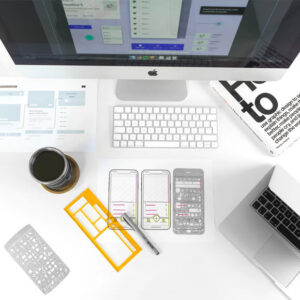How to brief your web designer
It’s a brand new year, the perfect time to launch new projects and set ideas into motion. If 2016 is the year that you decide to create a brand new website, you’re going to need to write a great brief in order to get exactly what you want.
A detailed, insightful brief is crucial whether you’ve got an in-house design and development team or you’re outsourcing the work to an external agency. Here are the essentials you absolutely must include, and what you mustn’t miss out:
About your business
To design a website that really fits with your brand, the designer really needs to understand your business. He or she needs to know the story of the brand, when and why it started, and its journey to the present day. What is the brand’s ethos? What are its goals? Include all relevant details, from the size of the business and its key products and services to its target audience and ideal customer base.
Your ideal website
If you have a website already, start this section of the brief by detailing what you don’t like about it. Explain why it doesn’t work for you or your customers, and why you need a new website. This will give the designer and development team an insight into the specific problems they need to solve with the new design, and an idea of your expectations. You can then be more specific as to what you want, describing your ideal website. Include:
- Essential features, such as e-commerce
- Integration with other systems or sites
- Contact details, from newsletter subscription to contact forms, plus Google Maps
- Social media interaction
- Design features, from sliders to animated GIFs
- Responsive features, such as optimisation for smaller smartphone screens
- Images/video – from the dominance on the site to the quality
- Search features
- Ways to measure the success of the website, such as analytics tools that you will be able to access and use to create reports
While you would obviously like a website that is unique and which stands out from your competitors, it can give your designer a good idea of what you’re looking for if you can point them to an existing website that you like the look of. Give a few examples to illustrate the look, feel and features that you like, to see if they can be incorporated into the design in some way. If you have any additional thoughts on design, from the style, colours and feel of the site, don’t be afraid to include them in the brief.
Your users
Go into more detail into your target market, giving as detailed information as possible into everything from age and location to whether they are public or trade users. Why do they go to your website – to shop, to be entertained, for information or to carry out research? This information can help the developer to tailor functionality and features to suit your ideal customer.
Budget and timeline
Last but not least, be clear and specific about when you expect the project to be finished and how much you want to spend. This will help the designer work out what is realistically achievable.
Did you include any extra details in your web design brief? What do you think is the most important thing to convey to a designer? Please feel free to share your thoughts.








